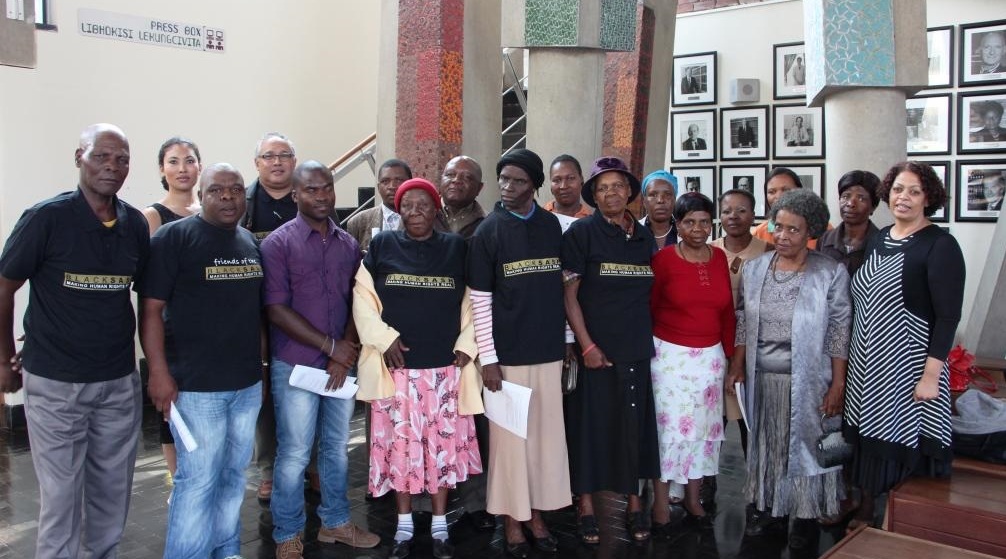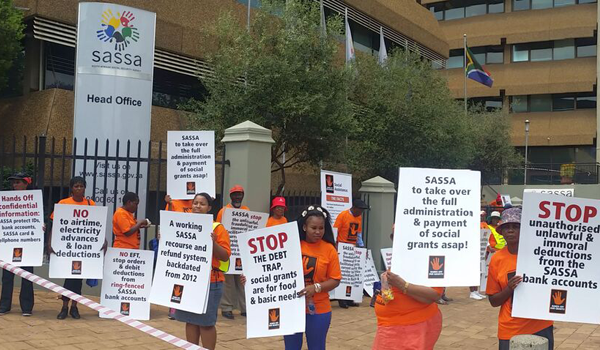About Community-Based Monitoring
What is Community-Based Monitoring?
Community-based monitoring (CBM) allows civil society to gather and analyse information from the service users’ points of view. It recognises that communities, citizens and public service users are active holders of fundamental rights and not merely passive users of public services. As a result, CBM provides strong evidence to take back to government and, where necessary, into the public domain, in order to better the delivery of services where needed and to acknowledge good service where it is provided.
Why do Community-Based Monitoring?
The goal is to promote civic engagement to realise socio-economic rights by advocating for open, transparent and accountable governance.
Citizen-based monitoring (CBM) is an approach to monitoring government performance that focuses on the experiences of ordinary citizens in order to strengthen public accountability and drive service delivery improvements.
Step 1
Establish community partner relationship
- Agree on public service to be monitored
- Secure MoU
- Draft a code of conduct
- Consider ethical issues
The strength of this model lies in formulating a strong relationship with an existing community-based organisation or community partner (CP), as these are the people actively involved in their communities and understand the local context. Great care is taken to negotiate the relationship with the correct organisation to partner with, ensuring that the monitoring exercise enhances the work of the CP. Once agreement is reached the CP is trained and skilled up on who best to perform this monitoring. To ensure that the local service improves, we need local users and organisations based in the community to be driving this process.

Step 2
Establish government relationship
This happens at the different tiers of government (national, provincial/regional, district and local). Securing physical access to government departments and their service delivery facilities is critical to the success of community monitoring programmes. Black Sash signed a memorandum of understanding with the Department of Performance Monitoring and Evaluation (DPME) supporting the CBM project undertaken by Black Sash in selected SASSA, Department of Health and Local Government sites. SASSA also provided a letter for access to select facilities for monitoring purposes. Black Sash and Community Partners build on relationships developed during previous monitoring engagements with the Department of Health and the selected local government sites. Black Sash with community partner representation establish relationships with national and provincial government departments, while CPs with support from Black Sash establish relationships at district and local level.
Step 3
Engage community partner
This step is about building leadership and skills and knowledge of the local community partner - guiding and supporting them through the local facility engagement. Partners are trained on building a relationship with the local government facility; the ethics of monitoring; guiding respondents through a questionnaire without invalidating the responses; norms and standards as well as policy guidelines for the government sector or agency being monitored; interpreting survey results; sharing the results with local government facility and community stakeholders at a community Dialogue; offering community members to express views for improvement of the service.
Partners are also trained on how to facilitate in a participatory and inclusive manner and how to develop the Improvement Plan. The implementation of the plan will be lead by a Joint Monitoring Committee which will regularly report back to the community on the work done, progress made and want obstacles encountered.
Step 4
Community partner monitors facility
- select & train monitors
- prepare survey tools
- collect the data
- do site observations
- finalise the data
Data gathering takes place over a 3 month period each year and consists of a light-touch survey conducted by trained monitors. Responses are captured directly onto the system via mobile or desktop tools, or else are transcribed from paper-based forms. Each community partner endeavours to survey at least 300 respondents per facility in order to ensure accurate representation.
Step 5
Report findings
- clean the data & analyse
- package the data
- create a presentation
- send your findings to stakeholders
In order to effect local change leading to improved service delivery, it is vital that the results and output of the monitoring activities are presented back to the facility and its service users. This step is concerned with the analysis and packaging of these results. Each site is analysed and their results presented back to them by means of high-impact posters which are put up at the facility to give feedback to their users. In addition results are also packaged into a handout which is then used to plan the dialogues with.
Step 6
Conduct dialogues
- plan some dialogue events
- host the dialogues
- create an improvement plan
- establish a joint monitoring committee
Dialogues are a platform for civil society, service users and management / staff of the monitored government facilities to discuss the findings of the annual monitoring and together, develop and adopt an improvement plan to address the concerns raised. This is a collaborative platform, facilitated by the community partner, from which a joint monitoring committee (made up of community stakeholders and facility staff / management) should be established. The committee ensures the implementation of the improvement plan. Learnings from the current cycle are fed back and to be taken into account when planning the next cycle. This ensures that the process is continually learning and improving and optimisations are realised as time progresses. Inviting representation from DPME and the Public Service Commission would also be beneficial.
Materials
Step 7
Engage in advocacy
The implementation of the Improvement Plan developed and adopted at the Dialogue is actively monitored. The Joint Monitoring Committee leads this work and reports progress and challenges to the community stakeholders. It is often the case that issues raised at a local level need provincial or even national interventions in order to address the systemic concern. We see the results of the annual monitoring surveys as providing a good indicator of the overall well being of the system, but recognise that more focused campaigns will be required to address the issues at the correct level. This is where our advocacy step fits into the larger CBM model. CBM also ensures that advocacy is evidence-based.

Step 8
Reflection & Learning
Writing up case studies with CPs of the learning experiences - what worked well and should be repeated, as well as the challenges and how these should be changed in the following monitoring cycle. At this stage a review of surveys tools and report formats are done.
















